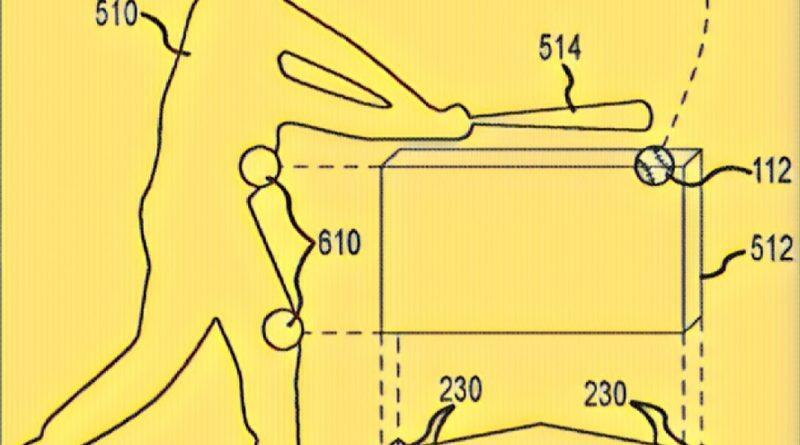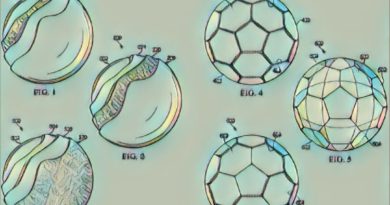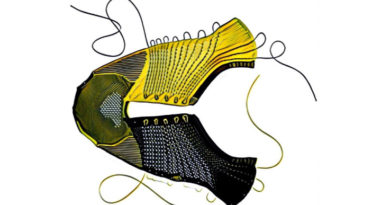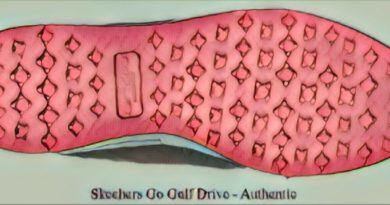Who’s Innovating in the World of Sports?

Well, the use of the word “innovating” in the title is a bit much because I wouldn’t call this technology particularly innovative (and apparently the patent office agrees, as all the pending claims are under a final rejection), but it is interesting to see that a tech giant like Intel is trying to carve out some ownership of the intersection of sports and technology. Recently an Intel patent application titled “Smart Baseball First Base or Home Plate” caught my eye.
The application describes the invention as:
Briefly, in accordance with one or more embodiments, a smart base for a baseball system or a softball system comprises a sensor to detect a first time at which a runner has touched the smart base, a radio-frequency (RF) receiver to receive a signal from a smart baseball that indicates a second time at which the smart baseball was caught, timing circuitry to detect if the second time occurs before or after the first time; and indicator circuitry to indicate a force out if the second time occurs before the first time.
OK, interesting but tell me more…
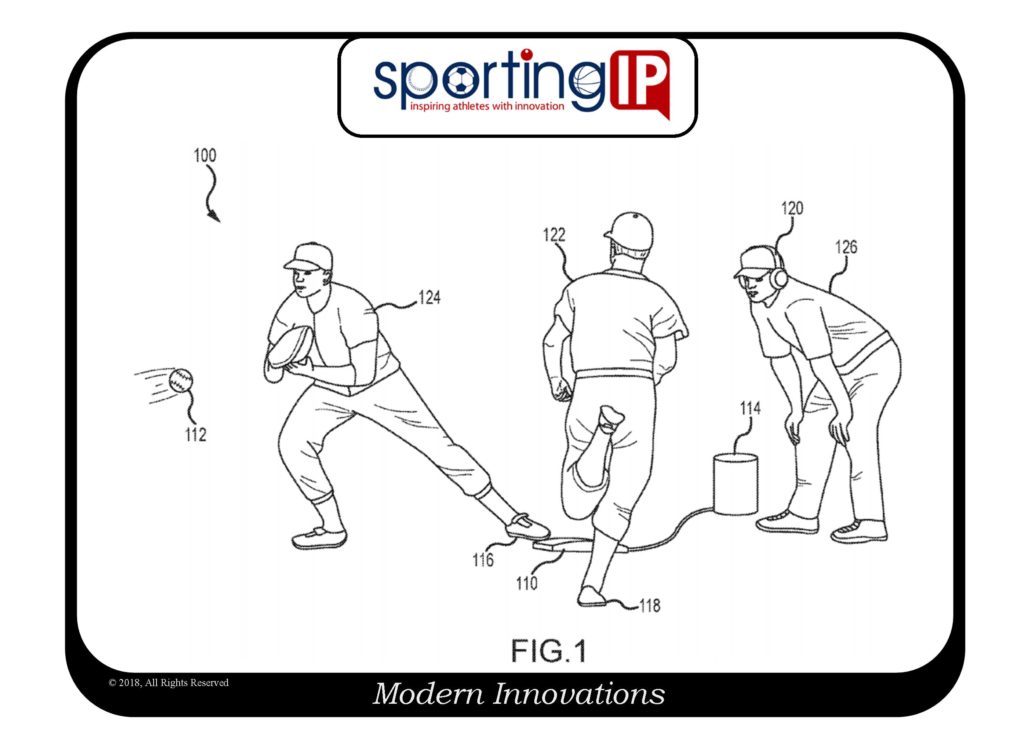
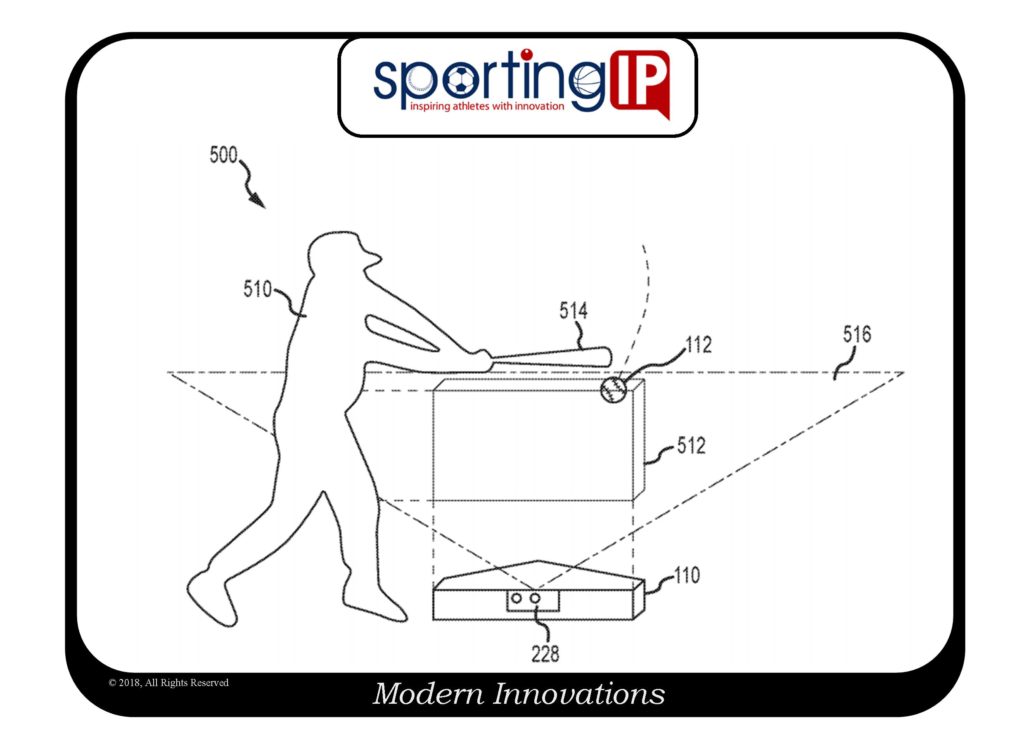
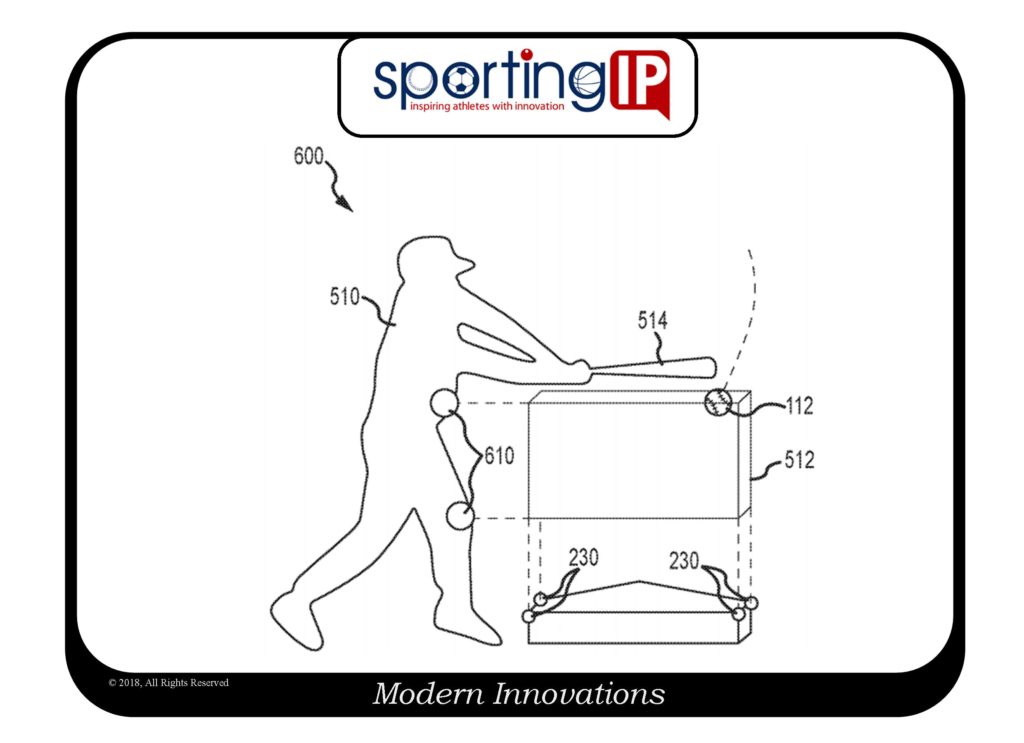
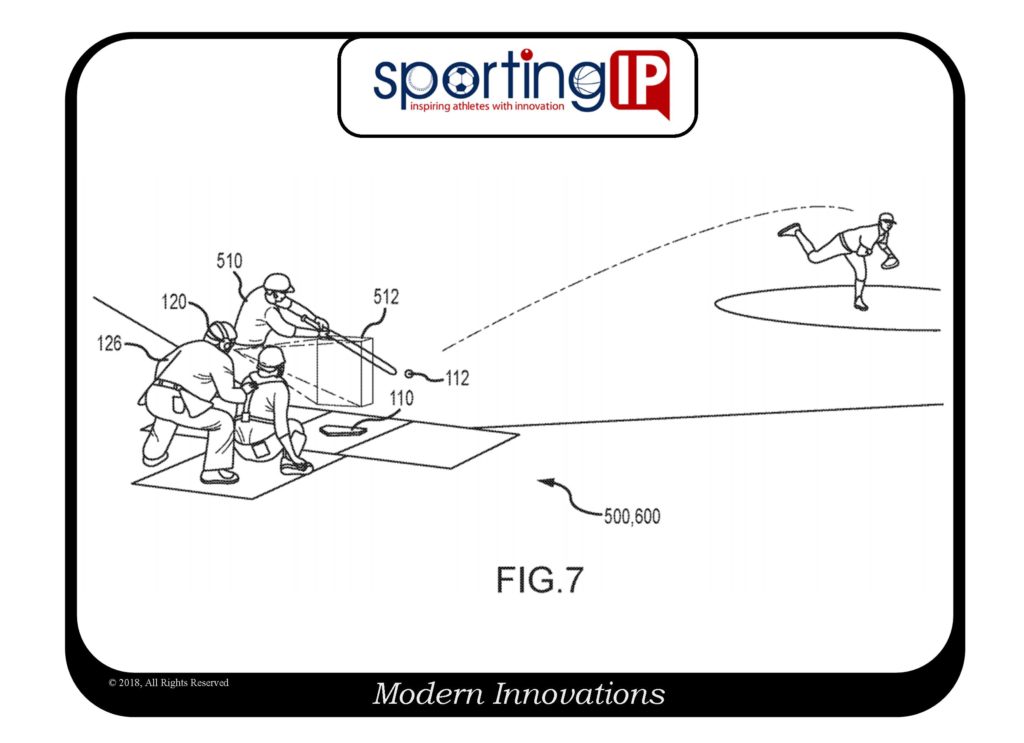
[0016] Referring now to FIG. 1, a diagram of a smart baseball system showing a smart base to determine a force out in accordance with one or more embodiments will be discussed. It should be noted that smart baseball system 100 may include all of the components shown in FIG. 1 working together, or may include fewer or more components, for example to provide a subset or a superset of the features that are illustrated, and the scope of the claimed subject matter is not limited in this respect. Furthermore, although the game of baseball is used herein as an example, the principles of smart baseball system 100 and its constituent components also may be applicable to other sports similar to baseball such as softball, and/or to other sports such as football, soccer, or lacrosse, and some of many examples, and the scope of the claimed subject matter is not limited in this respect.
[0017] As shown in FIG. 1, a smart baseball system 100 may include a smart base 110 such as first base to be utilized in a baseball game to detect whether or not a player running to first base is forced out after successfully hitting the smart baseball 112 into the field of play. It should be noted that the term smart as used herein may refer to an item or device that may include one or more sensors and/or one or more circuitry to detect, measure, receive, transmit, and/or process information detected from one or more sensors, although the scope of the claimed subject matter is not limited in these respects. After hitting the smart baseball 112 into the field of play, player 122 attempts to run to smart base 110 and touch or tag smart base 110. If another player (not shown) throws the smart baseball 112 to player 124, for example first baseman, and player 124 is touching smart base 110 when the smart baseball 112 is caught prior to player 122 touching or tagging smart base 110, then a force out will occur. In accordance with one or more embodiments, smart base 110 may include one or more sensors to detect when player 122 has tagged smart base 110. Furthermore, smart baseball 112 may include one or more sensors to determine when player 124 has successfully caught the smart baseball 112, and may include a mechanism to transmit the timing information for the catch to the smart base 110. Circuitry in smart base 110 may compare the timing at which player tagged smart base 100 to the timing at which smart baseball 112 was caught by player 124 to determine whether or not a force out occurred, or whether player 110 was otherwise safe by tagging smart base 110 prior to the catch event.
[0018] In the event a force out occurs or if player 122 is safe, smart base 110 may include one or more indicators to indicate to the players and/or to umpire 126 if present, which event occurred. For example if a force out occurs, smart base 110 may indicate this event by illuminating or flashing first light or lamp of a first color, and/or may play an audible sound of a first tone or a first pattern. If player is safe, either no indication may occur wherein an indication occurs only if a force out occurs, or smart base 110 may indicate this event by illuminating or flashing a second light or lamp of a second color, and/or may play an audible sound of a second tone or a second pattern.
[0019] In some embodiments, smart base 110 may detect whether or not player 124 it touching smart base 110 at the time at which smart baseball is caught, for example by detecting the presence or pressure of the player’s foot on smart base 110. In some embodiments, the shoe or cleat of player 124 may include a sensor or a transponder to assist with detecting whether or not player 124 is touching smart base 110 at the time at which smart baseball 112 is caught, and/or whether player 124 touches smart base 110 after catching smart baseball 112 and prior to player 122 tags smart base 110. Similarly, the shoe or cleat of player 122 may include a sensor or transponder to assist smart base 110 to detect the timing of when player 110 touches smart base 110.
[0020] In one or more embodiments, an auxiliary device such as a smart umpire 114 may be connected with smart base 110 that includes the indictors such as lights and/or speakers to make appropriate indications for smart base 110. Such a smart umpire 114 may be connected to smart base 110 via a wired connection or via a wireless connection. Furthermore, in some embodiments smart umpire 114 may include more advance circuitry to provide the ability to indicate the detected events using spoken words such as “Out!” or “Safe!”. In addition, smart umpire 114 may include a user interface that is capable of detecting voice commands or the spoken input to control the functions of smart umpire 114 and/or smart base 110, and also may include circuitry to connect smart umpire 114 to a local area network or a wide area network. Such networking circuitry may allow smart umpire 114 to connect with other smart umpires or other smart bases such as second base and third base, and/or home plate, to work together for more control over the baseball game, to help record game statistics and scoring, and/or to provide software updates or the like.
[0021] In one or more embodiments, a human umpire 126 may be assisted with making a force out determination via an assist device 120 that may indicate to umpire 126 indication of a force out event or a safe event. For example, assist device 120 may comprise a headset that is may couple with smart base 110. Smart base 110 may transmit a signal to assist device 120 in response to a detected event, and the assist device 120 may play a sound in the ear of umpire 126 indicating to umpire which event occurred such a force out. If umpire 126 hears a tone or sound indicating a force out event, then umpire may signal or speak that an out has occurred. Assist device 120 may be a simple device such as a headset that produces sounds indicating the detected event, or more by a more advance device such as a hand held device, and/or may comprise an application running on a smart device such as a smart phone or smart band or watch, or headwear that includes a head up display (HUD), as some of many examples. Assist device 120 may have a similar architecture to the architecture of smart baseball 112 as discussed, below, or a subset thereof. These are merely example embodiments for assist device 120, and the scope of the claimed subject matter is not limited in these respects. Example architectures for the individual components are discussed below. An example architecture of smart base 110 is shown in and described with respect to FIG. 2, below.
AND, it wasn’t just baseball that they had in mind…
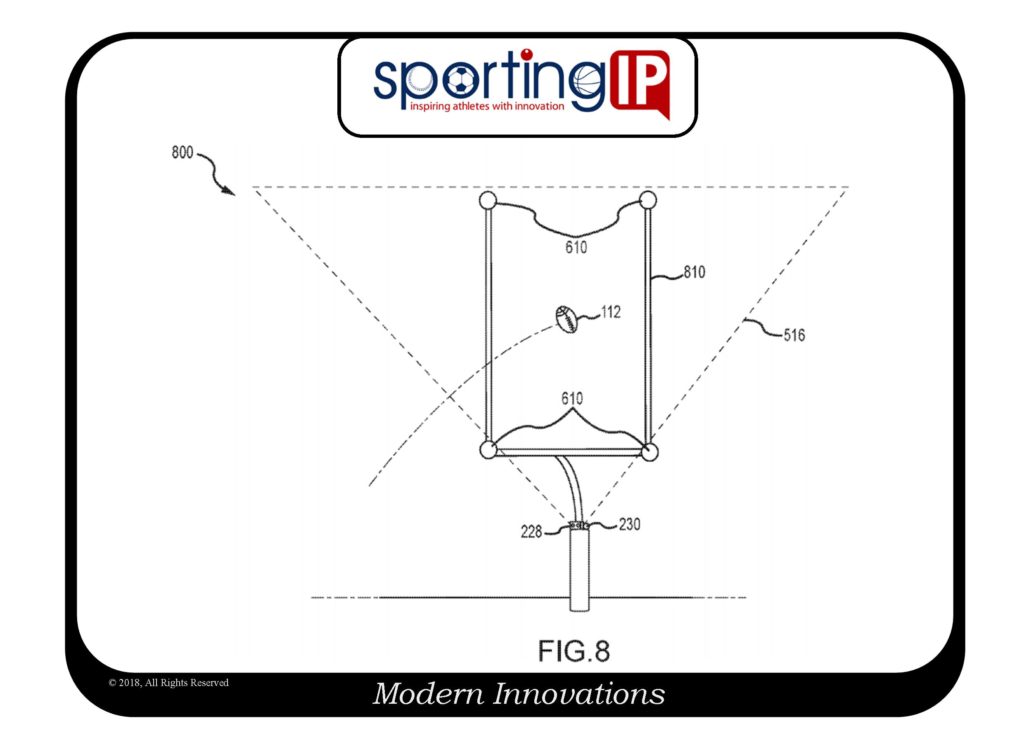
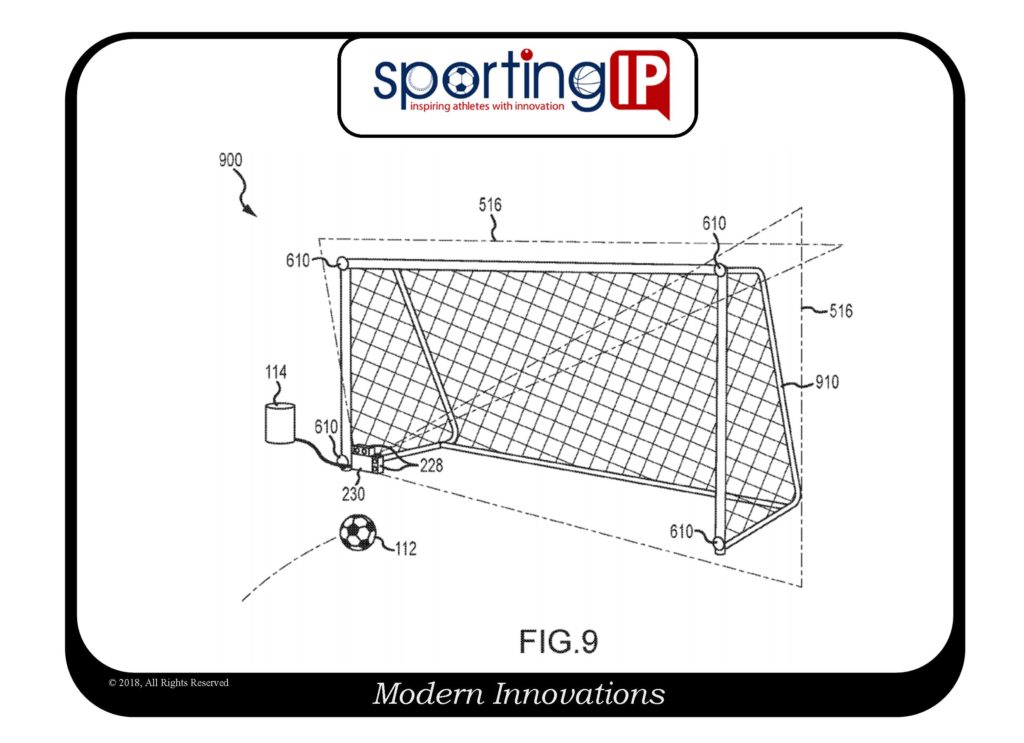
Interesting? Sure, but innovative? Heck no, which is why it spurred me to actually check on the status of the application, which revealed that all of the pending claims are under a final rejection. No surprise, but the actual surprise was that they thought they had a chance at protection and made the investment in a patent application, although I am sure there was some rational strategy behind the filing… right? (he says as he looks to see how much Intel stock is in his retirement account).
Dave Dawsey – The Sports Invention Lawyer
PS – follow me on Twitter (@sportingIP) and please sign-up to receive posts via email.

